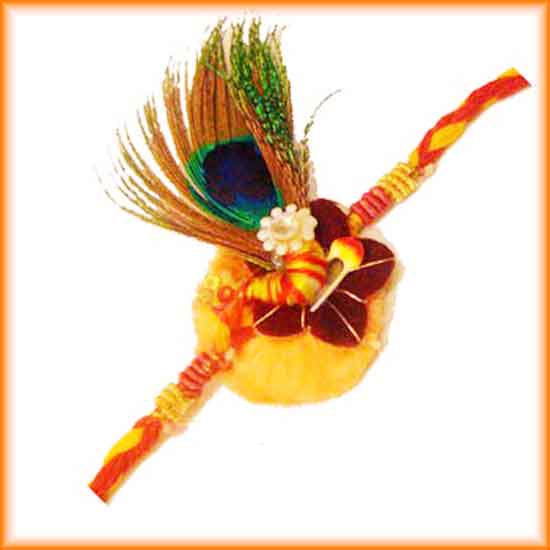|

The full moon of Shravan month is celebrated all over India as Raksha Bandhan, Narali Purnima, Grahama Purnima, Kajari Purnima, Pavitropana, Janyo Punyo and Balram Jayanti. Of these Raksha Bandhan or Rakhi Purnima as it is also called, is the most commonly observed Hindu festival when rakhis (colourfully embellished sacred wrist cords), strengthen sibling relationships.
The ceremony involves a sister tying a rakhi on her brother’s wrist followed by feeding each other a piece of mithai. Cousin-brothers and muh-bola-bhais are often elevated to the status of rakhi-brothers.
The rakhi symbolizes the sister’s affection and good-will for her brother. In return, he gifts her cash and may be a sari too, and promises to help protect her for life.
With commercialisation having taken over, different types and styles of rakhis are available. Most of them contain animal origin items such as resham/silk thread, silk zari, seed pearls, tiny sea shells, shellac coated beads, peacock feathers, leather cords and may be scented too. Unfortunately, even pure vegetarians rarely notice these things when purchasing rakhis.
Resham/silk thread and silk zari is commonly utilised in place of the traditional cotton thread. The use of silk thread is hinsak enough, but some have succumbed to using leather cords. Seed pearls, tiny sea shells and shellac coated beads are utilised to decorate the rakhis in floral designs. And, a peacock feather could be stuck on as an added embellishment. If sweet smelling, the scent must have probably been fixed with an animal substance.
Rakhis made without any animal origin items can be easily picked out. Beauty Without Cruelty therefore requests you to choose discerningly and make sure the rakhis you buy and gift, or even accept, are ahinsak. We also request that the return gifts be discerningly chosen – for example, no silk saris.
|